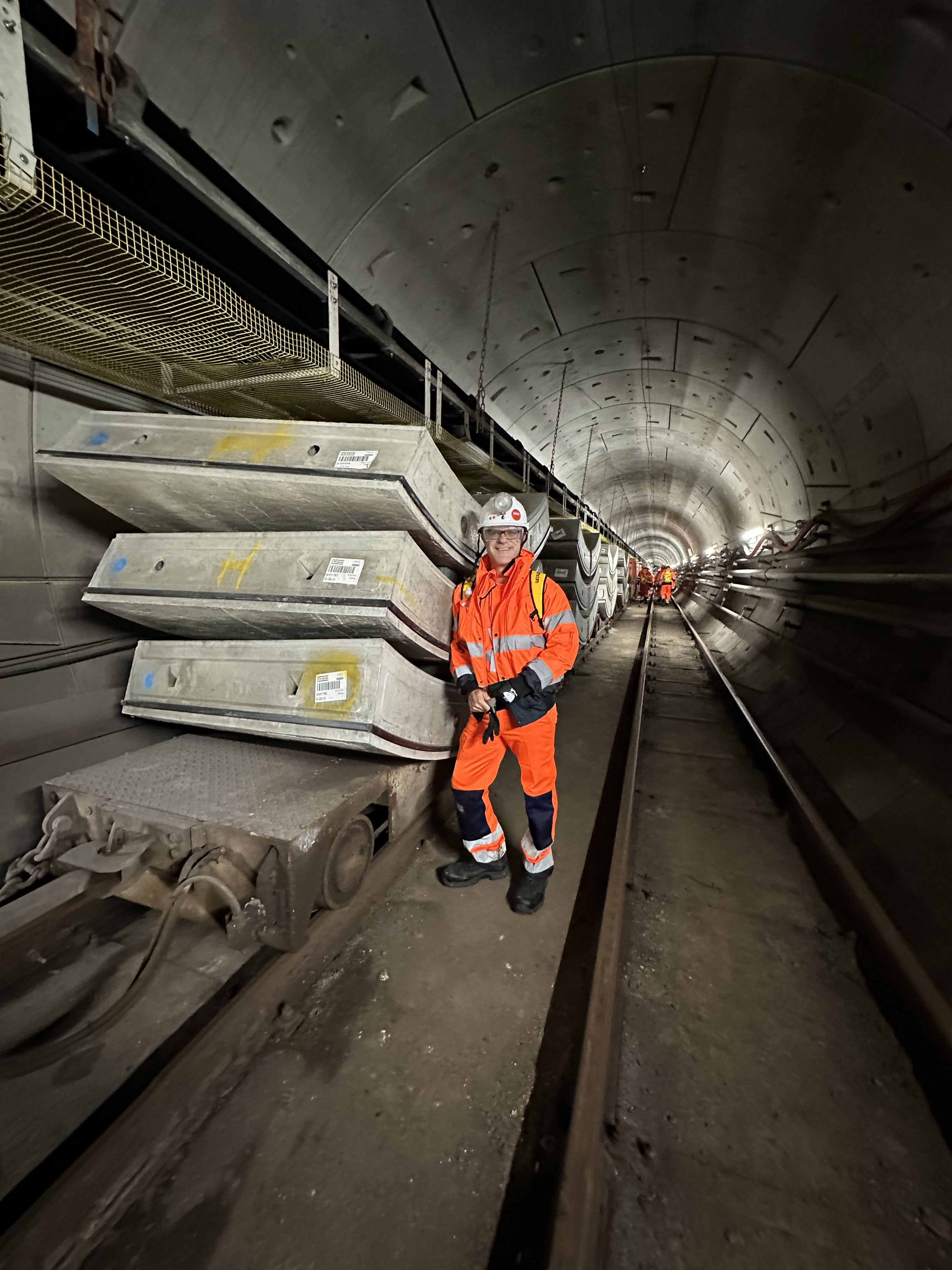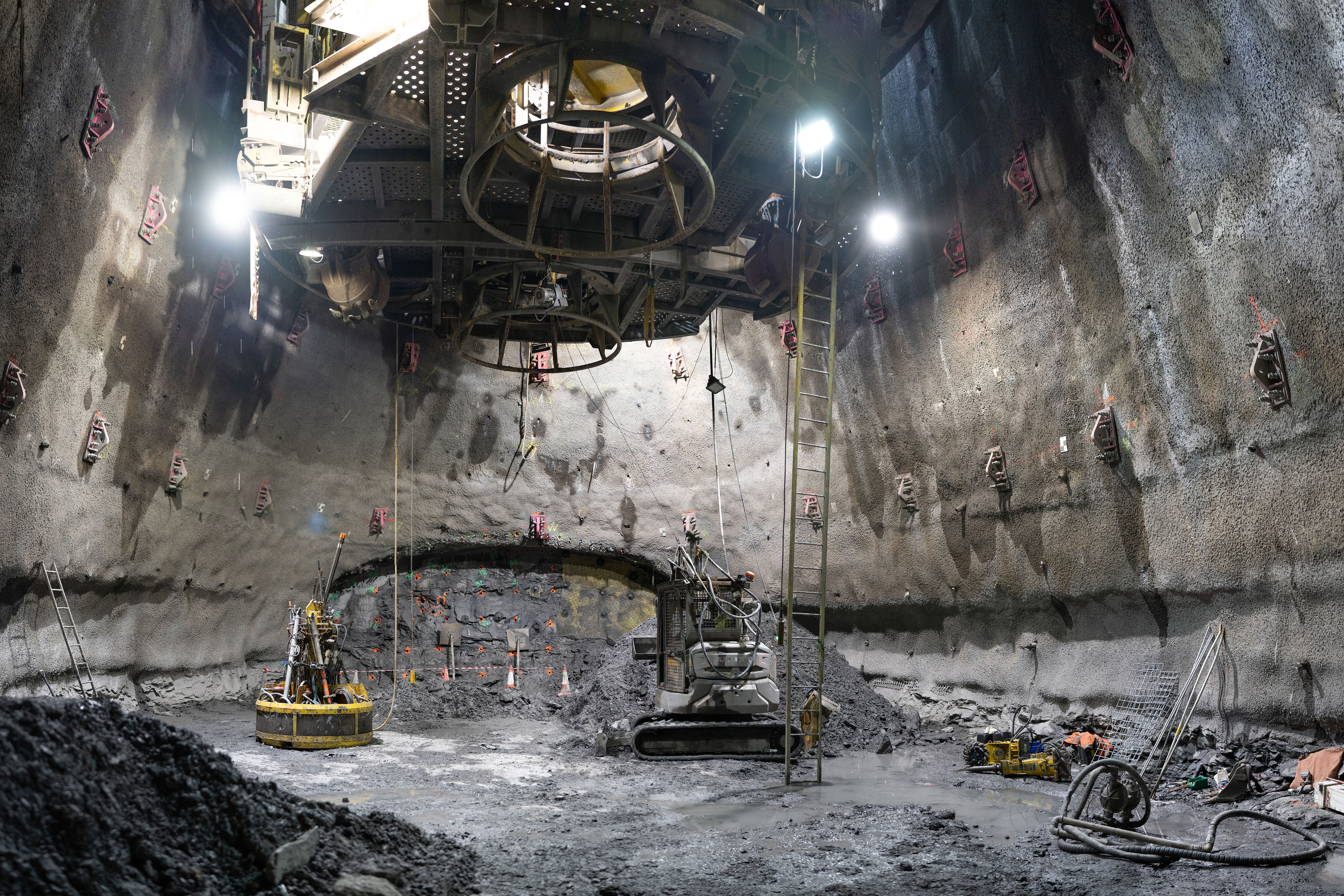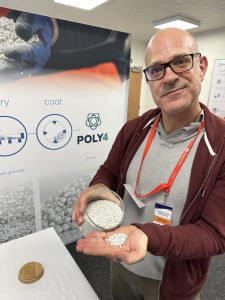
| The JH Explorer series follows our investment teams across the globe and shares their on-the-ground research at a country and company level. |
We’re treating soil like dirt. It’s a fatal mistake, as our lives depend on it. George Monbiot, www.theguardian.com. March 25, 2015
I have had a deep interest in soil since reading George Monbiot’s excellent book “Regenesis” which woke me up to the environmental impacts of farming, and which talks about how we can feed the world without devouring the planet. In this spirit I recently visited Anglo American’s Woodsmith fertiliser mine development project that sits within the North York Moors, a national park in Northern England.
The development is a very impressive exposition of new mining technology and is very sympathetic to the environment in this environmentally-sensitive area. According to Anglo American the project has the potential to contribute circa £1.2bn to the local economy, with the creation of more than 1500 jobs. The underground mine will barely have any surface footprint and the polyhalite ore will be transported via a 37-kilometre underground conveyor system to the processing and deep water ship loading terminal.

Backbone of the project – the 37km mineral transport shaft is the conduit from mine to port and for services into the mine
An organic fertiliser with a low-carbon footprint
Overuse of traditional chemical fertilisers can reduce soil PH (soil acidification), which reduces soil nutrients, as well as destroy beneficial soil microbes and add to greenhouse gas emissions via both fertiliser production and the release of nitrogen oxide into the atmosphere.
The fertiliser that will be produced at the Woodsmith project is derived from polyhalite, a naturally-occurring water soluble mineral. Being a multi-nutrient and low-chloride fertiliser, the ‘POLY4’ product is well suited to organic farming. There’s no chemical processing – to turn the ore into fertiliser requires only granulation through simple crushing and the addition of water and starch. This means the resulting fertiliser granules have a fraction of the carbon footprint of equivalent fertiliser blends alongside numerous benefits to soil health and farm productivity. What’s more, zero chemical use in processing means the product can be classified as organic.
The mine and processing itself has numerous attractions – almost no tailings with a 1:1 ore to product ratio, with little water and lower energy use, given the minimal processing and waste, rendering it a low operating and sustaining cost project. Mining along the thick ore body allows for more efficient bulk mining without the typical development that an underground mine requires.

View of bottom of mineral transport shaft
Multiple benefits – improved soil structure and crop yield, carbon sequestration
 During my visit I met farming, agronomy and soil experts who advised me that the POLY4 product enhances soil strength and structure with increased resilience to compaction, as well as improving crop yields. This is an unappreciated environmental benefit as good soil structure improves drainage and reduces soil erosion, which mitigates floods and also supports biodiversity. Higher crop biomass can be achieved as the fertiliser adds key nutrients to the soil like potassium, sulphur, magnesium and calcium, which helps address the lower yields often associated with sustainable/organic farming given they omit chemical fertilisers and pesticides.
During my visit I met farming, agronomy and soil experts who advised me that the POLY4 product enhances soil strength and structure with increased resilience to compaction, as well as improving crop yields. This is an unappreciated environmental benefit as good soil structure improves drainage and reduces soil erosion, which mitigates floods and also supports biodiversity. Higher crop biomass can be achieved as the fertiliser adds key nutrients to the soil like potassium, sulphur, magnesium and calcium, which helps address the lower yields often associated with sustainable/organic farming given they omit chemical fertilisers and pesticides.
A simple product with a big role to play in sustainability
Soil is the largest store of organic carbon, containing double the amount of carbon as the atmosphere. The addition of calcium to the soil by the product is another plus as this helps soil to sequester carbon.* Soil organic carbon and carbonates are stored within soil, rocks and plants, which would otherwise have been adding to carbon dioxide in the atmosphere.
The soil is the great connector of lives, the source and destination of all. It is the healer and restorer and resurrector, by which disease passes into health, age into youth, death into life. Without proper care for it we can have no community, because without proper care for it we can have no life.
Wendell Berry, The Unsettling of America: Culture and Agriculture
Challenges and opportunities in sustainable agriculture
As the world moves towards more environmentally-responsible regenerative farming practises there will be growing demand for products like this. Greenhouse gas emissions from food systems make up about a third of the global total, and of this, almost 40% is contributed by agricultural production. Governments, corporates and investors increasingly acknowledge that carbon emissions can be minimised through better management of land and improved farming practises such as precision farming, no-till farming and regenerative agriculture, including less land clearing. Fertilisers have a key role to play here, not to mention in the production of enough food to sustainably feed the almost 10 billion people on our planet expected over the next 25 years or so.
While there are multiple challenges to overcome towards a sustainable agriculture future, such as slow adoption of new farming practises and technology, reducing meat consumption and water scarcity, progress is being made. Governments are acknowledging the role of agriculture; for example, the European Green Deal (EDG) aims for the region to be climate neutral by 2050 with sustainable agriculture and food systems as a key contributor towards this goal.
My visit to the Woodsmith fertiliser mine is a good example of an innovative and proactive responsible resource company that is helping to make real change by producing a low carbon footprint product that can enhance crop yields, while also improving soil structure. Alongside that, it has the potential to deliver returns for investors and the local community, from the development of a long life, world-class operation.
*Carbon sequestration: a process whereby carbon dioxide is removed from the atmosphere and stored through biological, chemical, or physical processes. In biological carbon sequestration, CO2 is stored in vegetation eg. woodlands and forests, as well as in soils and oceans.
Our ESG integration approach: Thoughtful, practical, research-driven and forward-looking
IMPORTANT INFORMATION
Natural resources industries can be significantly affected by changes in natural resource supply and demand, energy and commodity prices, political and economic developments, environmental incidents, energy conservation and exploration projects.
Sustainable or Environmental, Social and Governance (ESG) investing considers factors beyond traditional financial analysis. This may limit available investments and cause performance and exposures to differ from, and potentially be more concentrated in certain areas than the broader market.
Queste sono le opinioni dell'autore al momento della pubblicazione e possono differire da quelle di altri individui/team di Janus Henderson Investors. I riferimenti a singoli titoli non costituiscono una raccomandazione all'acquisto, alla vendita o alla detenzione di un titolo, di una strategia d'investimento o di un settore di mercato e non devono essere considerati redditizi. Janus Henderson Investors, le sue affiliate o i suoi dipendenti possono avere un’esposizione nei titoli citati.
Le performance passate non sono indicative dei rendimenti futuri. Tutti i dati dei rendimenti includono sia il reddito che le plusvalenze o le eventuali perdite ma sono al lordo dei costi delle commissioni dovuti al momento dell'emissione.
Le informazioni contenute in questo articolo non devono essere intese come una guida all'investimento.
Non vi è alcuna garanzia che le tendenze passate continuino o che le previsioni si realizzino.
Comunicazione di Marketing.
Important information
Please read the following important information regarding funds related to this article.
- Le Azioni/Quote possono perdere valore rapidamente e di norma implicano rischi più elevati rispetto alle obbligazioni o agli strumenti del mercato monetario. Di conseguenza il valore del proprio investimento potrebbe diminuire.
- Le azioni di società a piccola e media capitalizzazione possono presentare una maggiore volatilità rispetto a quelle di società più ampie e talvolta può essere difficile valutare o vendere tali azioni al momento e al prezzo desiderati, il che aumenta il rischio di perdite.
- Il Fondo si concentra su determinati settori o temi d’investimento e potrebbe risentire pesantemente di fattori quali eventuali variazioni ai regolamenti governativi, una maggiore competizione nei prezzi, progressi tecnologici ed altri eventi negativi.
- Il Fondo segue un approccio di investimento responsabile, che può comportare un sottopeso su alcuni settori (a causa dei criteri di esclusione applicati), quindi un rendimento diverso rispetto ai fondi che presentano un obiettivo finanziario simile, ma che non applicano criteri di esclusione nella selezione dei titoli.
- Il Fondo potrebbe usare derivati al fine di ridurre il rischio o gestire il portafoglio in modo più efficiente. Ciò, tuttavia, comporta rischi aggiuntivi, in particolare il rischio che la controparte del derivato non adempia ai suoi obblighi contrattuali.
- Qualora il Fondo detenga attività in valute diverse da quella di base del Fondo o l'investitore detenga azioni o quote in un'altra valuta (a meno che non siano "coperte"), il valore dell'investimento potrebbe subire le oscillazioni del tasso di cambio.
- I titoli del Fondo potrebbero diventare difficili da valutare o da vendere al prezzo e con le tempistiche desiderati, specie in condizioni di mercato estreme con il prezzo delle attività in calo, aumentando il rischio di perdite sull'investimento.
- Il Fondo può sostenere un livello di costi di operazione più elevato per effetto dell’investimento su mercati caratterizzati da una minore attività di contrattazione o meno sviluppati rispetto a un fondo che investa su mercati più attivi/sviluppati.
- Il Fondo potrebbe perdere denaro se una controparte con la quale il Fondo effettua scambi non fosse più intenzionata ad adempiere ai propri obblighi, o a causa di un errore o di un ritardo nei processi operativi o di una negligenza di un fornitore terzo.